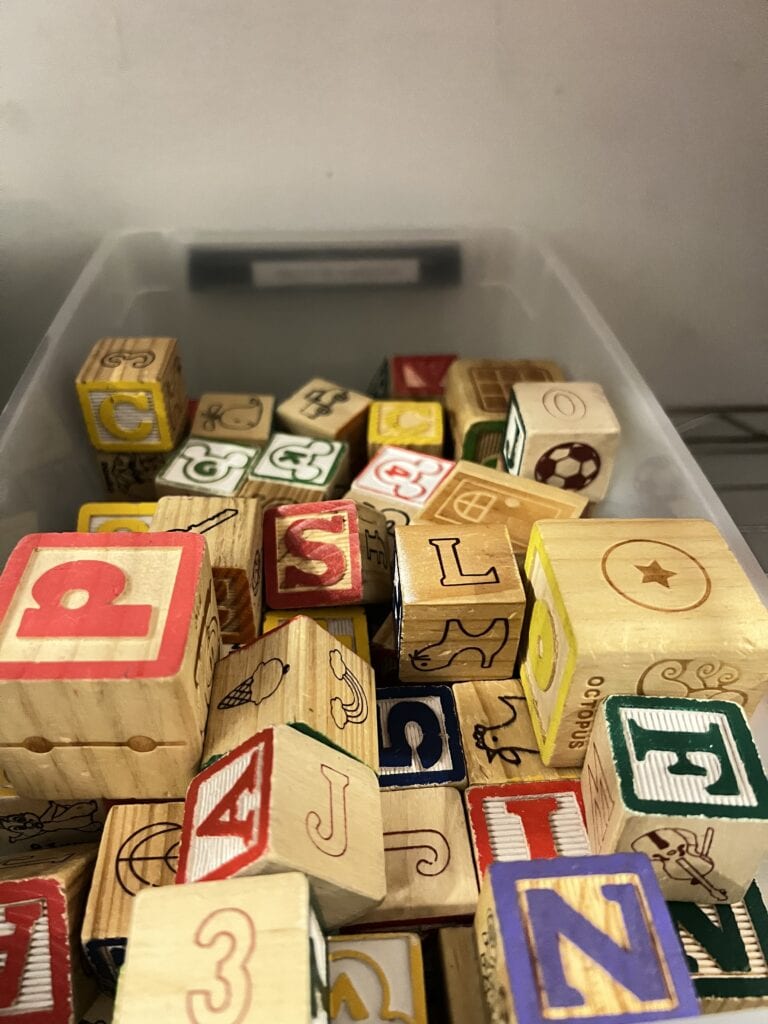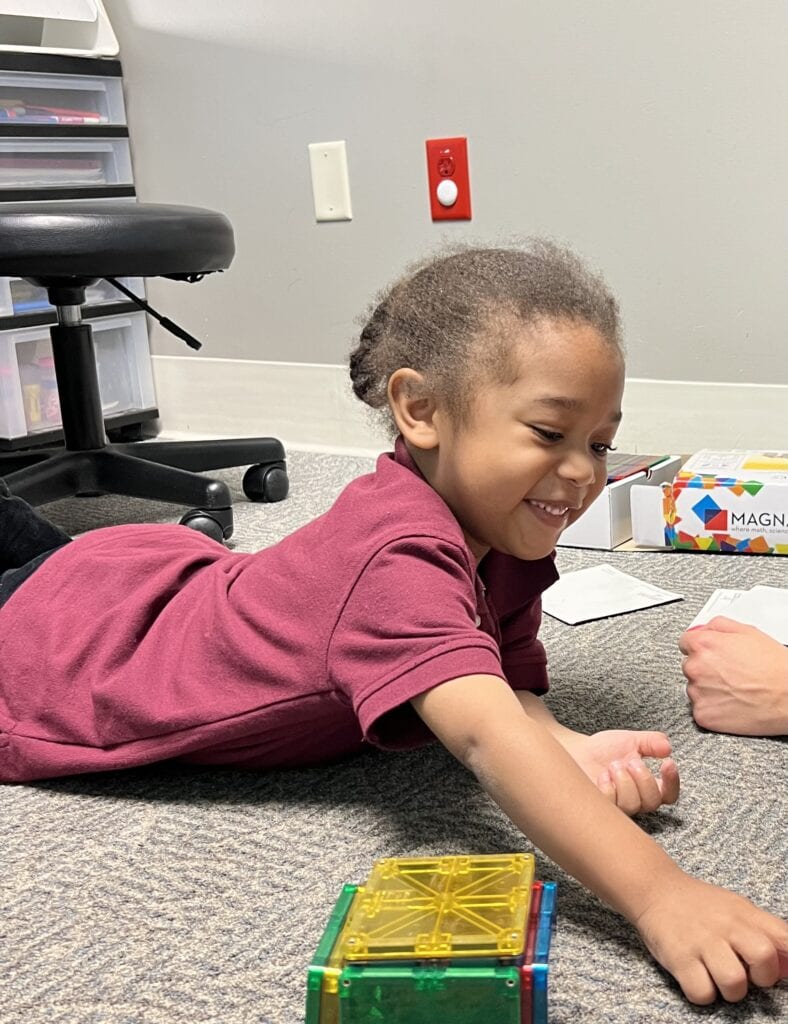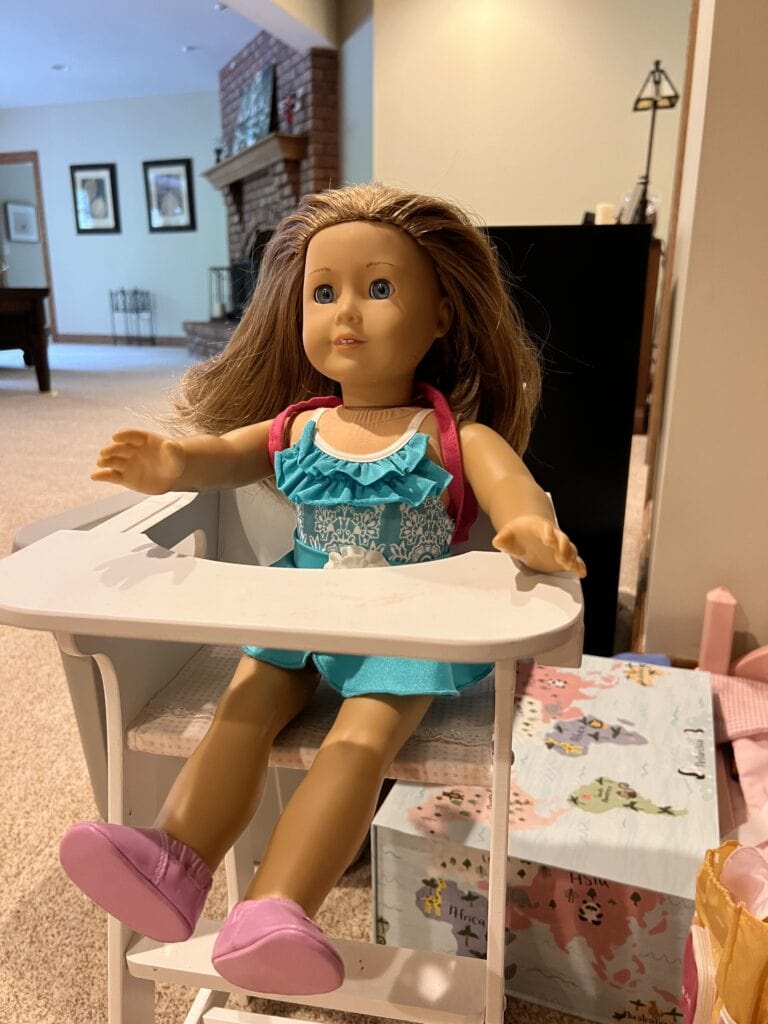Play to Learn, Learn to Play: An Introduction to Child Development Toys
As pediatric developmental therapy specialists, we are often asked, “What toys should I get to help my child develop?” It’s a great question, and one we love to hear because we know you want the best for your child. Understanding that kids develop through a variety of play based opportunities, child development toys provide hours of wonderful chances to learn in a variety of ways, many you’d never even consider.
But, getting back to the original question of “What toys should I get?”, the answer — it depends! The “right” toy often depends on your little one’s current play skills and what the target may be. It also depends on how you play with the toy with your child and if you need to be present and involved in the actual play itself. By the end of this blog we hope you realize that in reality there is no right or wrong toy. Just a different type of opportunity to let your child explore and fill their developing brains.

Below we have provided some general guidelines in choosing toys and how you might want to consider playing with them. We have also provided a list of different toys paired with specific ideas on how they might be used to help as your child continues to grow. Finally, we included some helpful information about the types of play that your kiddo will engage in as the play process becomes more complex and morphs over time.
Before we get to the fun stuff, a warning. Please be aware that some toys and household items may contain or be a choking hazard themselves. Be sure to check each product’s cautionary statements, age recommendations, and do not leave your child unsupervised!
Traditional Toys and Child Development
Children are often drawn to things that light up and make noises, and smart tech toys may seem to be the best thing to help them learn and grow. While they seem more exciting, these are often not the best for enhancing your child’s social language and ability to engage with others. Research has shown that children communicate less when playing with electronic toys.¹
Fun tip — while many toys on the market make at least some noise or blink, try removing the batteries as soon as you get the toy out of the package. This allows for the child to seek other ways the toy can be used before the noise and light show are introduced.
Choosing Developmental Toys to Fit Your Child’s Play Skills
The best way to maximize your kiddo’s interest and learning opportunities is to start playing at their current level. If you see your child is uninterested in toys, it’s most likely that the toys they have been using are too complicated for them. Watch your little one as they are interacting with different types of toys on their own. What type of play are they primarily doing?
Developmental play types to consider are as follows:
Simple Play
If they are mainly holding objects or putting them in their mouth (where, to be clear, they are still learning about solids, textures, and the sort), try to start with some simple toys and basic play ideas. For example:
- Rolling a small ball (or even an exercise ball!*)
- Pushing a car
- Crashing a tower of blocks

Combination Play
If they are combining two or more objects in play, try to start with toys that have multiple pieces or mix different toy sets. They may enjoy building magnet tiles into a tower and then putting animals inside. Other ideas:
- Putting people in a bus
- Sticking toppings on a toy pizza
- Cutting toy fruit apart with a fake knife (Editor’s Note: never give them a real one!)
Pre-symbolic Play
If they are acting out familiar actions like drinking from a toy cup or feeding a stuffed animal, you can join them in simple imaginary play. Try to pick child developmental toys that you can use as agents like puppets, dolls, stuffed animals, or animal and people figures. Start by modeling basic actions they do frequently like eating, drinking, walking, and bathing.

Symbolic Play
If they are setting up multi-step sequences and pretending the toy has a life, pick toys that add new steps onto their routine. For example, if they are putting figures in a bed, cover them with a blanket and then pretend to have them sleep. You can pick toys where they can act out the routine for getting ready for bed, like a toothbrush, soap, towel, and pajamas. Another idea would be a baking set where they pretend to mix and stir ingredients, and then cook the food in a toy oven.

Be Flexible When Your Child is Playing With Developmental Toys
If your toddler has an idea, take a step back and follow their lead. It is ok if they are not playing in the way the toy was intended to be used. Let them put people in the toy microwave, fill the bus seats with puzzle pieces, or catapult objects off the pop-up toy. Never stifle creativity. Most of our world’s greatest inventions (for example, penicillin, anyone?) have come accidentally. You never know what might happen next!
You might want to do the set-up and let your child complete their favorite step. They might not be interested in building the magnet tiles into a tower. That’s OK. Take the initiative, you build it, and let them crash it! Let them know you’ll build it again after they pick up the pieces and sort them by shape or color for you. They may have no interest in creating a face for Potato Head. You can build it and let them pull the pieces out. And you’ll be happy to make another face if they put all the eyes, glasses, feet, and mouths together in separate piles for you to choose from.
The one thing most folks simply forget is that you should use everyday objects as much as you possibly can. Sometimes the best toys are objects already in your home. These kinds of objects may be cups, paper towel tubes, tape, salad spinners, tupperware containers, pots, pans, and — my personal favorite — empty boxes. The variety of ways these objects can be put together and used creatively by a developing mind is nothing short of fascinating.
Offer Just a Few Developmental Toys to Your Child (Spending Less is a Good Thing!)
Having only a few toy options encourages children to play with toys longer and to get creative with how they play with them to allow a better quality of play. You don’t always need to get the latest and greatest. In these “add to cart” times It can be hard to limit the number of toys in your house, but don’t get caught up even with so many exciting ones on the market.

If you do have to order the latest and greatest, one tip to force longer and more creative play is to periodically rotate out your toys. Simply start packing away half of them in storage, and then switch them out every month or so. Not only will you be supporting your child’s development, but it will also help you limit new toy purchases because the ones that come out of storage will seem new and exciting to your kiddo again!
We hope this gave you some ideas on how to choose child developmental toys for your little learner! If you enjoyed this information, wait until we highlight some of our favorite toys. Consider this the first of our brand new Toy Series!
We also have tons of awesome information, local and otherwise, on our resources page. There you can find fun activities and programs for even greater learning opportunities for your itty bitty.
Follow us on Facebook to stay up-to-date on blog posts like this and more! And as always, if you believe your child would benefit from therapy services, contact us to schedule an appointment today.
Written by Cheryl Michalesko, edited by Drew Haverstock, PT and Vivian Chau, PT, DPT
References:
- Sosa AV. Association of the type of toy used during play with the quantity and quality of parent-infant communication. JAMA Pediatr 2016 Feb 1; 170:132. (http://dx.doi.org/10.1001/jamapediatrics.2015.3753)
* Third-party links in this blog are provided as a convenience and for informational purposes only; they do not constitute an endorsement or an approval by Milestone Therapy of any of the products, services or opinions of the corporation or organization or individual.
